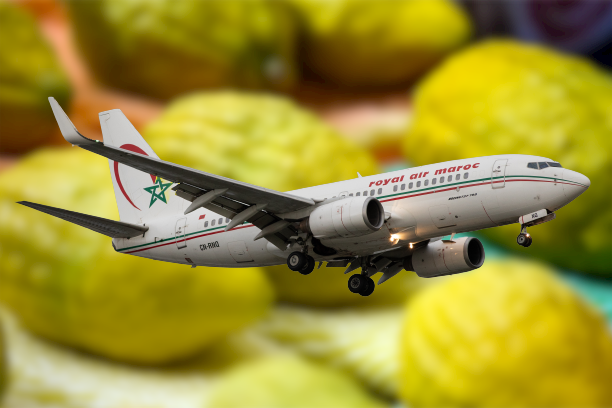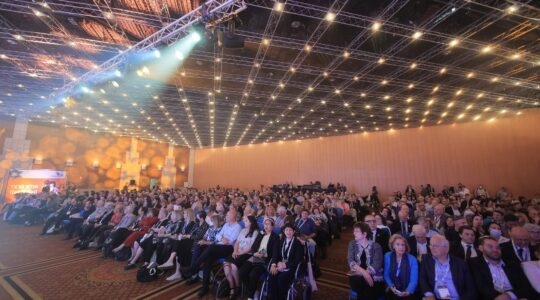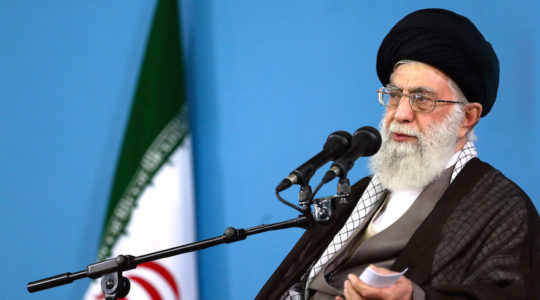(JTA) — A bumper crop of etrogs is taking a more direct route to Israel this year, thanks to a historic confluence of geopolitics and religious observance.
Once home to the largest Jewish community in the Arab world, Morocco has a long history producing the citrus fruit used by millions of Jews every Sukkot — in fact, tradition holds that etrog trees were first planted in the Atlas mountains nearly 2,000 years ago by Jews who found shelter amongst the Berber tribes there after the destruction of the Second Temple in Jerusalem.
Jewish communities around the world import hundreds of thousands of Moroccan etrogs every year: They’re more affordable than the Calabrian variety, the Diamante Citron, prized by some Hasidic groups, which can command hundreds of dollars for an unblemished specimen.
But the Israeli market, where the majority of the world’s Orthodox Jews live, has a robust etrog industry of its own and strict controls on agricultural imports.
The one time Moroccan etrogs are welcome in Israel is after the shmita year, the seventh year in the Jewish agricultural cycle, where working the soil in the land of Israel is forbidden under Jewish law. While not all Israeli farmers follow the agricultural cycle prescribed by Jewish law, those who produce ritual products such as etrogs must — or else their products would be forbidden to a religious customer base.
The past Jewish year that ended with Rosh Hashanah was a shmita year, meaning that no etrogs were cultivated in Israel for this year’s Sukkot festival, which begins Sunday night. Instead, huge numbers of etrogs traveled from Morocco to Israel, as they did seven years ago.
This time, though, their path was eased by a normalization agreement struck by Israel and Morocco two years ago, part of a slew of trade deals between Israel and Arab countries aimed at opening new diplomatic and economic connections.
“Before the agreement, we always had to sell through a third country,” Hervey Levy, a businessman and member of the Agadir Jewish community who operates an etrog farm, told the Jewish Telegraphic Agency. “It could be Turkey, it could be Spain, it could be Italy — it had to transit somewhere.”
Several agreements to ease trade between Morocco and Israel after their normalization agreement, part of the Abraham Accords brokered by the United States, have yet to be signed, according to Einat Levi, the former head of economic affairs at Israel’s diplomatic mission to Morocco. But she said the trade in etrogs, which as a religious object face different regulations from other agriculture, was evidence of the potential in the countries’ relationship.
“It is symbolic because it shows how two religions can stand up for each other — so when the Jews cannot work their land, their fellow Muslims can supply what they need during that year, so they can keep their ritual and tradition,” Levi said.
This year, Hervey Levy sent his etrogs to Israel direct from Casablanca on Royal Air Maroc, Morocco’s national airline. The normalization deal brought passengers the other direction, too, he said — competitors in the etrog trade.
“This year was the first time it was a shmita after the agreements, so we had many people, some newcomers trying to try their luck.” Levy said. “The newcomers, they come, they give some high prices without knowing, they didn’t know the system to send and pack, but you also had some experienced people who have been here for a long time.”
For Levy and the Jews of the Agadir, the period of a few weeks before Rosh Hashanah is always a happy time. A few dozen Jewish merchants would descend on the Berber-speaking villages in the mountains around Agadir, typically invigorating Shabbat services during their visit.
“They all end up at the synagogue so we’re quite happy because the synagogue is full during this period,” Levy said.
This year however, Levy said there were enough traders that they decided to stay together over Shabbat at a hotel in the mountains, where they could walk to the etrog farms.
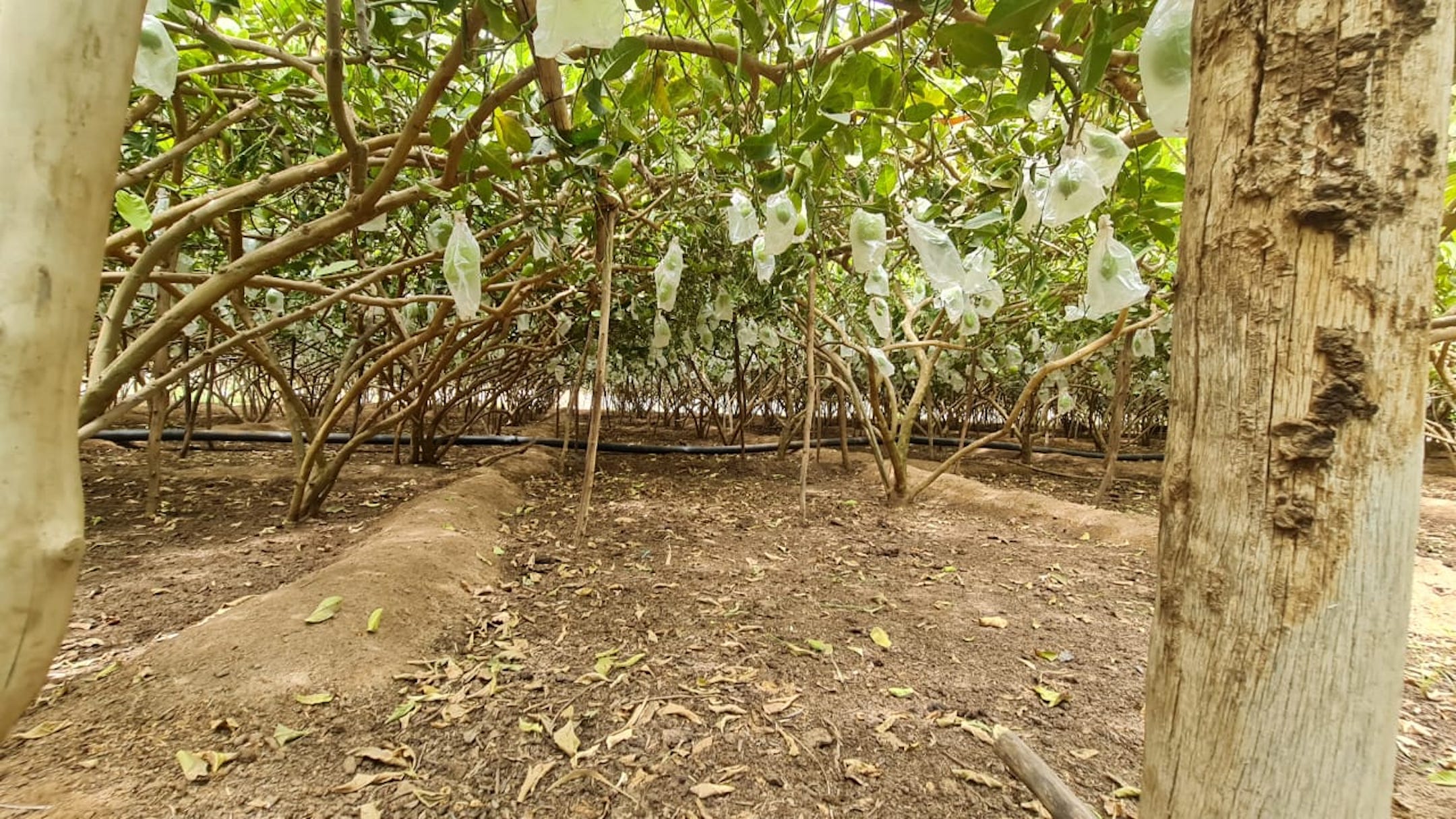
Hervey Levy’s etrog farm near Agadir, Morocco, seen in 2022. (Courtesy of Levy)
Fewer than 2,000 Jews remain in Morocco, but Berber-speaking Muslims have long cultivated the fruit in villages high in the Atlas mountains around the beach town of Agadir. Only 40 to 50 Jews remain in the city itself, once home to thousands of Jews as an important trade hub on the route between sub-Saharan Africa and western Europe.
Of them, about a dozen cultivate etrogs. Levy’s father planted his family’s farm decades ago.
“My father, zichrona livracha, a long time ago took small trees from up in the mountains, in the place where they were first grown here, and began harvesting them in the valley,” Levy recalled, using the Hebrew words meaning “may his memory be a blessing.”
Levy’s father was far from a simple farmer. An industrialist and entrepreneur, he was the president of the Jewish community in Agadir, and a member of the Moroccan parliament, but for him, growing etrogs was a labor of love.
Though they exported the fruits for sale abroad, for the Moroccan Jewish community, he offered his crop for free.
His father died last year, but Levy, whose full time job is as a business consultant, made sure the orchard wouldn’t go fallow this year.
Levy’s family farm boasts around 400 trees and produced around 9,000 fruits this year, and another Jewish run farm in Agadir is at least double the size, he said. In comparison, the average village orchards in the mountains have only between 60 to 100.
“There are lots of Muslim owners but they have smaller lands,” Levy explained.
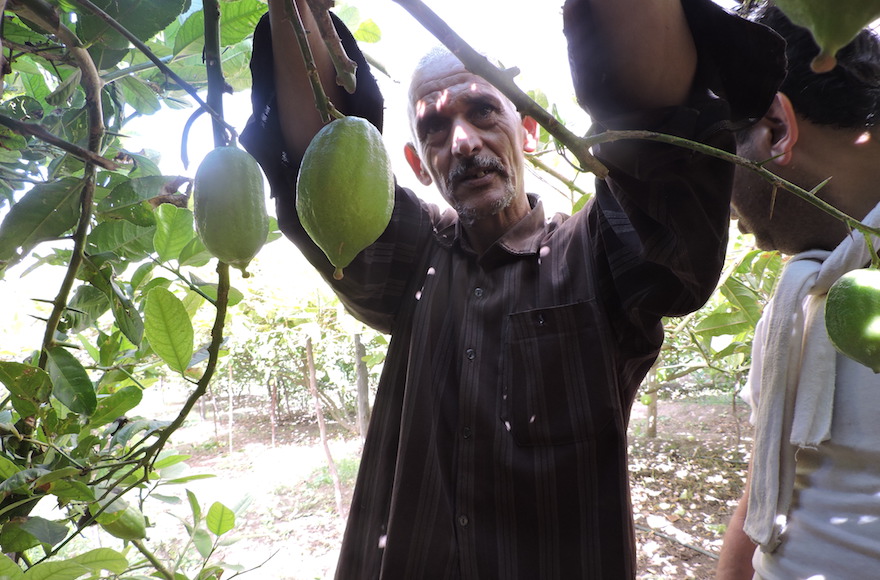
Jewish merchants come from around the world to buy from Moroccan etrog growers like Mohammed Douch, Assads, Morocco, Sept. 7, 2015. (Ben Sales)
Still, no one is getting rich off the trade. While the finest quality of etrog, rated “Aleph-Aleph” on the Israeli scale, may sell for more than $80 in Morocco and more abroad, the lesser “Bet” quality etrogim only go for around $15, and the “Gimels,” less than $10.
Barely 5% of the crop are Aleph quality, Levy explained, while 40% are Bets and the rest Gimel. In total, Levy said that after a year’s worth of labor and all the expenses, his farm saw only around $30,000 in profits.
Along with the lulav, a bound sheaf of branches, the etrog is an essential ritual object used during Sukkot; Jewish law requires adherents to wave the items during the holiday. The high demand for etrogs meant that the newly eliminated stopoff on their journey between Morocco and Israel was never the main obstacle to their import.
“The customs are very tough to accept etrogim from outside of Israel,” Levy said, “except for during the shmita year.”
Though the synagogue in Agadir may not have been full this year, etrog shipments were. About 600,000 etrogs were exported from Morocco, Levy estimated — 10% more than in a typical year, with a larger-than-usual portion headed for Israel but also to Jews around the globe.
“Even Brazil, Singapore, wherever there is a small community,” Levy said.
JTA has documented Jewish history in real-time for over a century. Keep our journalism strong by joining us in supporting independent, award-winning reporting.
